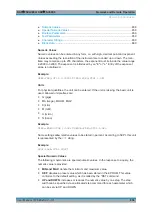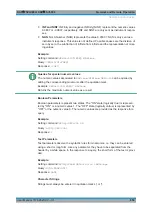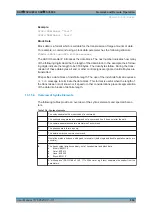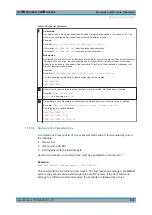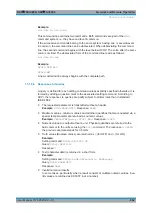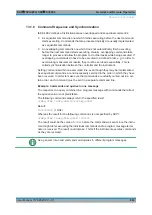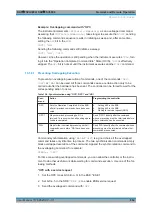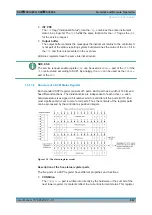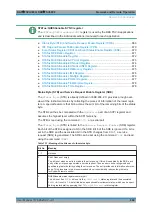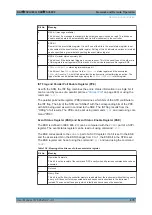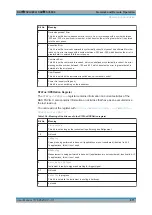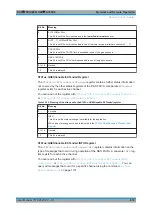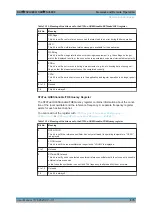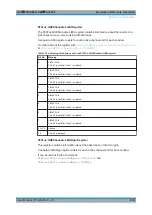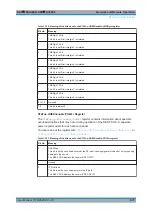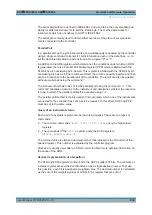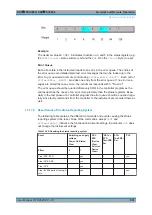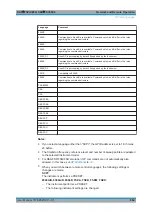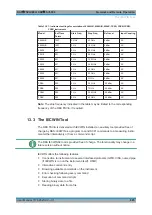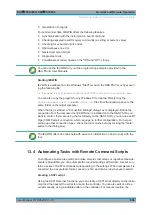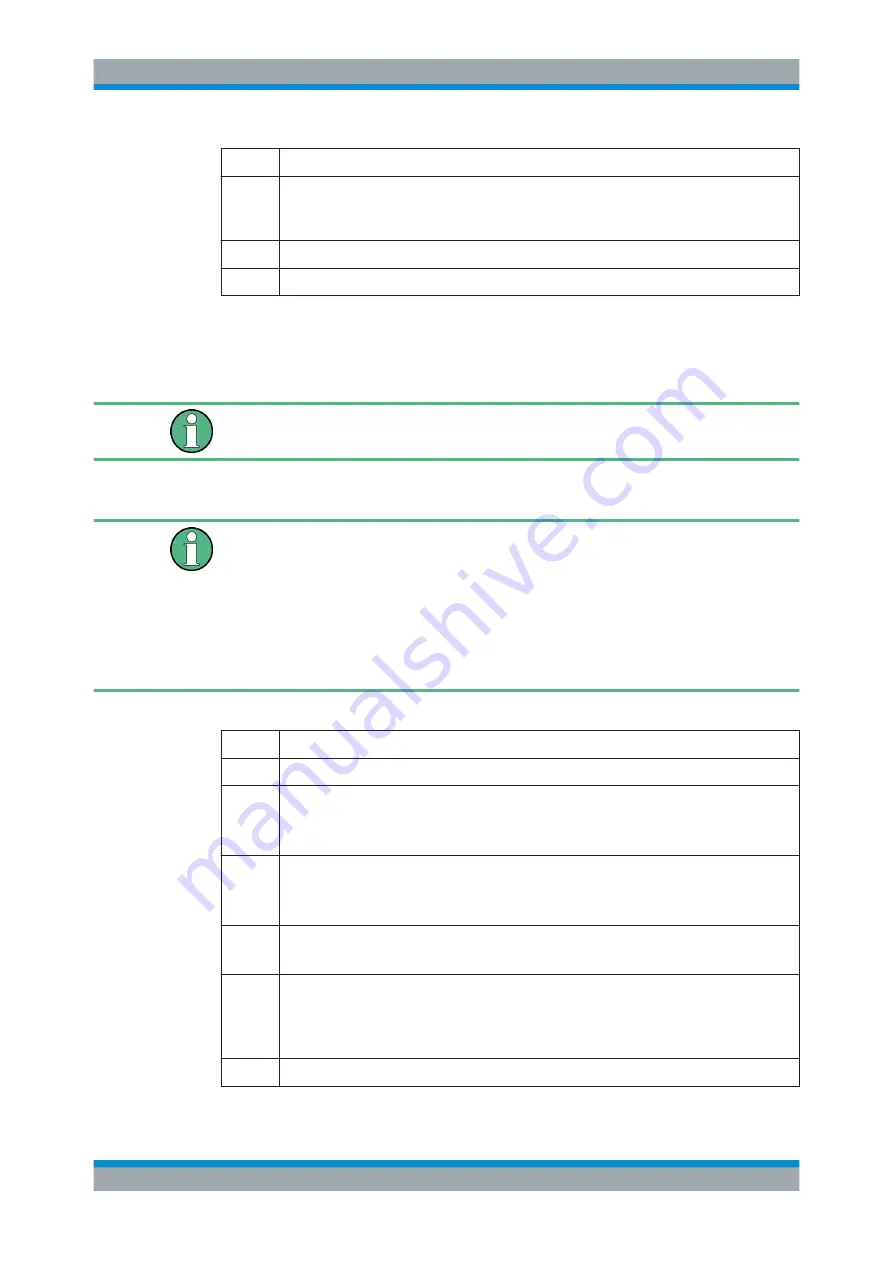
Network and Remote Operation
R&S
®
FSVA3000/ R&S
®
FSV3000
672
User Manual 1178.8520.02 ─ 01
Bit No.
Meaning
10
Range completed
This bit is set when a range in the sweep list has been completed if "Stop after Range" has
been activated.
11-14
Not used
15
This bit is always 0.
STATus:QUEStionable Register
The STATus:QUEStionable register contains information on instrument states that do
not meet the specifications.
The
STAT:QUES:SYNC
register is used by the applications and is thus described in the
individual applications' User Manuals.
You can read out the register with
STAT:QUES:COND
or
STAT:QUES:EVEN
.
The
STATus:QUEStionable
register "sums up" the information from all subregisters
(e.g. bit 2 sums up the information for all
STATus:QUEStionable:TIMe
registers).
For some subregisters, there may be separate registers for each active channel. Thus,
if a status bit in the
STATus:QUEStionable
register indicates an error, the error may
have occurred in any of the channel-specific subregisters. In this case, you must check
the subregister of each channel to determine which channel caused the error. By
default, querying the status of a subregister always returns the result for the currently
selected channel.
Table 13-10: Meaning of the bits used in the STATus:QUEStionable register
Bit No.
Meaning
0 - 1
Unused
2
"TIMe"
This bit is set if a time error occurs in any of the active channels.
STATus:QUEStionable:TIMe Register
provides more information on the error type.
3
"POWer"
This bit is set if the measured power level in any of the active channels is questionable.
STATus:QUEStionable:POWer Register
provides more information on the error type.
4
"TEMPerature"
This bit is set if the temperature is questionable.
5
"FREQuency"
This bit is set if there is anything wrong with the frequency of the local oscillator or the reference
frequency in any of the active channels.
STATus:QUEStionable:FREQuency Register
provides more information on the error type.
6 - 7
Unused
Remote Control Basics

